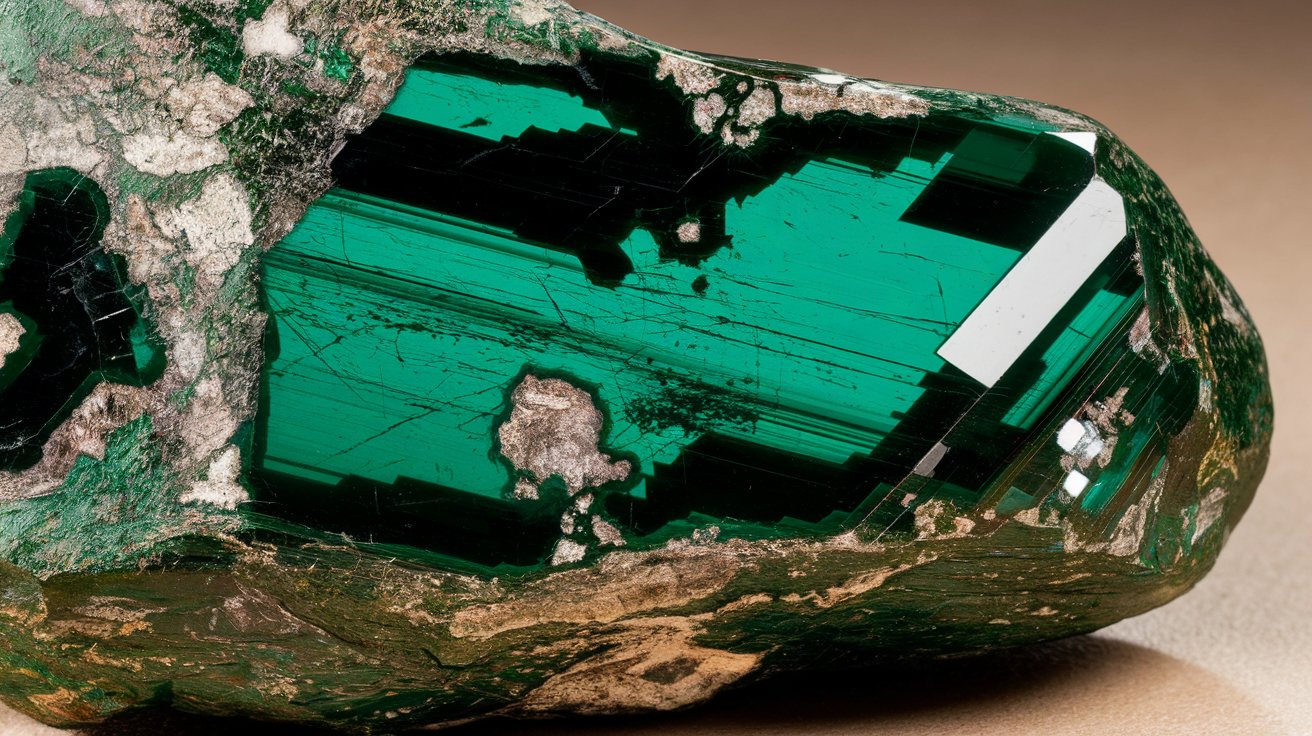
Ever heard of Alluaivite? This rare mineral, discovered in the 1970s in Russia's Khibiny Mountains, is a true gem for geologists and collectors alike. Named after the Alluaiv River, its chemical formula is a mouthful: Na19(Ca,Mn)6(Ti,Nb)3Si26O74Cl·2H2O. Alluaivite belongs to the eudialyte group and crystallizes in the trigonal system. It typically appears colorless to weak brownish-pink, with a vitreous luster and a Mohs hardness of 5-6. This mineral is not just a pretty face; it offers insights into the geological history of alkaline igneous rocks. Want to know more? Let's dive into 25 intriguing facts about Alluaivite!
Key Takeaways:
- Alluaivite, a rare mineral found in Russia, has a complex chemical composition and unique physical and optical properties. Its rarity makes it highly sought after by mineral collectors and researchers.
- Alluaivite's discovery, naming, and geological significance, along with its fluorescence and impurities, make it a fascinating and prized mineral among collectors and researchers.
Discovery and Naming
Alluaivite is a rare mineral with a fascinating history and unique properties. Let's explore some intriguing facts about this mineral.
- Alluaivite was first discovered in the 1970s in the Khibiny Mountains of the Kola Peninsula in Russia.
- The mineral was named after the Alluaiv River, which flows through the region where it was found.
Chemical Composition
Alluaivite's complex chemical makeup sets it apart from other minerals.
- The chemical formula for alluaivite is Na19(Ca,Mn)6(Ti,Nb)3Si26O74Cl·2H2O.
- This formula indicates the presence of sodium, calcium, manganese, titanium, niobium, silicon, oxygen, chlorine, and water molecules.
Classification and Structure
Understanding the classification and structure of alluaivite helps in identifying its unique characteristics.
- Alluaivite is classified as a silicate mineral and falls under the cyclosilicate category.
- It belongs to the eudialyte group, which includes other rare minerals with similar structures.
- Alluaivite crystallizes in the trigonal crystal system and belongs to the hexagonal scalenohedral (3m) class.
- Its space group is R3m, with unit cell dimensions a = 14.04 Å and c = 60.6 Å.
- The mineral has a Z value of 6, indicating six formula units per unit cell.
Physical Characteristics
Alluaivite's physical properties make it a unique and identifiable mineral.
- Alluaivite typically exhibits a colorless to weak brownish-pink color.
- It often forms irregular accumulations rather than well-defined crystals.
- The mineral does not exhibit cleavage and has a conchoidal fracture.
- It is brittle and has a Mohs hardness of 5-6.
- The luster is vitreous, and the streak is white.
- The mineral is transparent and has a density of approximately 2.76 g/cm³.
Optical Properties
Alluaivite's optical properties add to its uniqueness and aid in its identification.
- Alluaivite is uniaxial positive, meaning it has a single optical axis.
- The refractive indices are approximately nω = 1.62 and nε = 1.63.
- The mineral shows pleochroism, with colors ranging from colorless to pink depending on the orientation of the crystal.
Fluorescence and Impurities
Alluaivite's fluorescence and common impurities contribute to its distinctiveness.
- Under ultraviolet light, alluaivite exhibits orange-red fluorescence.
- Common impurities in alluaivite include strontium, rare earth elements (REE), potassium, barium, and zirconium.
Formation and Occurrence
The formation and occurrence of alluaivite provide insights into its geological significance.
- Alluaivite is typically found in alkaline igneous rocks, particularly in nepheline syenites and other alkaline intrusive rocks.
- It is associated with other rare minerals like eudialyte and catapleiite.
- The Khibiny Mountains are one of the primary locations where alluaivite has been discovered.
Rarity and Collectibility
Alluaivite's rarity and collectibility make it a prized mineral among collectors and researchers.
- Due to its limited occurrence in specific geological settings, alluaivite is considered a rare mineral.
- Its rarity makes it highly sought after by mineral collectors and researchers.
Alluaivite: A Rare Gem in the Mineral World
Alluaivite stands out as a rare and fascinating mineral with a complex chemical composition and unique properties. Discovered in the 1970s in Russia's Khibiny Mountains, this mineral's intricate structure and rarity make it a prized specimen for collectors and researchers alike. Its chemical formula, Na19(Ca,Mn)6(Ti,Nb)3Si26O74Cl·2H2O, reveals a blend of elements like sodium, calcium, and titanium. Alluaivite's physical characteristics, such as its colorless to weak brownish-pink hue, vitreous luster, and conchoidal fracture, add to its allure.
Found in alkaline igneous rocks, alluaivite provides insights into geological history and the conditions under which these rocks formed. Its rarity and unique features make it a subject of ongoing scientific research, with potential applications in materials science and geology. Whether you're a mineral enthusiast or a geology student, alluaivite offers a glimpse into the Earth's hidden treasures.
Frequently Asked Questions
Was this page helpful?
Our commitment to delivering trustworthy and engaging content is at the heart of what we do. Each fact on our site is contributed by real users like you, bringing a wealth of diverse insights and information. To ensure the highest standards of accuracy and reliability, our dedicated editors meticulously review each submission. This process guarantees that the facts we share are not only fascinating but also credible. Trust in our commitment to quality and authenticity as you explore and learn with us.


